-4-3-rectangle.jpeg)
There’s a certain quiet joy in opening a drawer of natural fly-tying hair — a landscape of texture, luster, and potential. Each patch carries the essence of wilderness: the whisper of current, the gleam of scales, the rhythm of a cast. For the Atlantic salmon fly tyer, natural hair isn’t just material; it’s character, motion, and heritage bound together by thread.
From the crisp stiffness of moose to the flowing elegance of Finn raccoon and temple dog, every hair type brings something unique to the vise. Below, we’ll explore a wide range of natural hair materials used in hairwing Atlantic salmon flies, their strengths, challenges, and ideal uses, and why each one deserves a place in your fly-tying kit.
The list below are a few of the more common natural hairs used today in modern salmon fly tying although there are many other alternatives I haven't mentioned as you can imagine. Everyone seems to have their favorites for a host of reasons. As with many aspects of fly tying, the freedom to create is the appeal for me! Experiment with other natural hairs, you might be surprised!
Moose Hair — The Classic Foundation
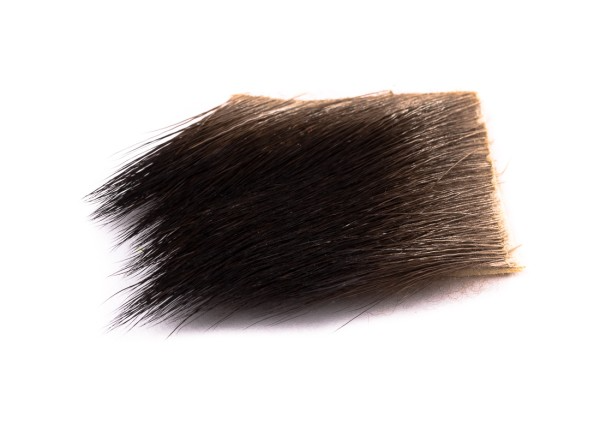
Characteristics:
No doubt the first that comes to mind especially with local tiers although it seems that many other alternatives are "stealing its trunder" so to speak. There are now so many alternatives available to the tier its not surprising that moose hair as a wing material is getting less and less prevalent.
Moose body hair is long, hollow, and stiff, providing structure and natural buoyancy. It resists collapse and flares just enough to hold shape in the current.
It has gained a following on Newfoundland rivers and is economical and readily available. Combined with the riffle hitch many prefer moose hair as it contributes to the fly riding high on the water enticing more strikes. At least thats the typical train of thought!
Benefits:
- High Buoyancy: Both moose body and mane hair have a hollow core, which traps air and makes flies float exceptionally well and high on the water's surface. .
- Stiffness and Durability: Moose hair is very stiff and coarse, especially compared to deer and elk hair. This stiffness helps flies maintain their shape and profile in the water, and the material's strength means flies hold up well
- Distinct dark sheen for contrast in low light
- Affordable and widely available
Challenges:
- Brittle when aged or overdried
- Limited movement in the water
- Varies in quality depending on where on the moose it is harvested. The short dark hair are the best it seems
Best For:
Classic hairwing flies such as the Thunder & Lightning Dark Wing or Blue Charm Dark Wing, where structure is key.
Black Bear Hair — The Understated Traditionalist
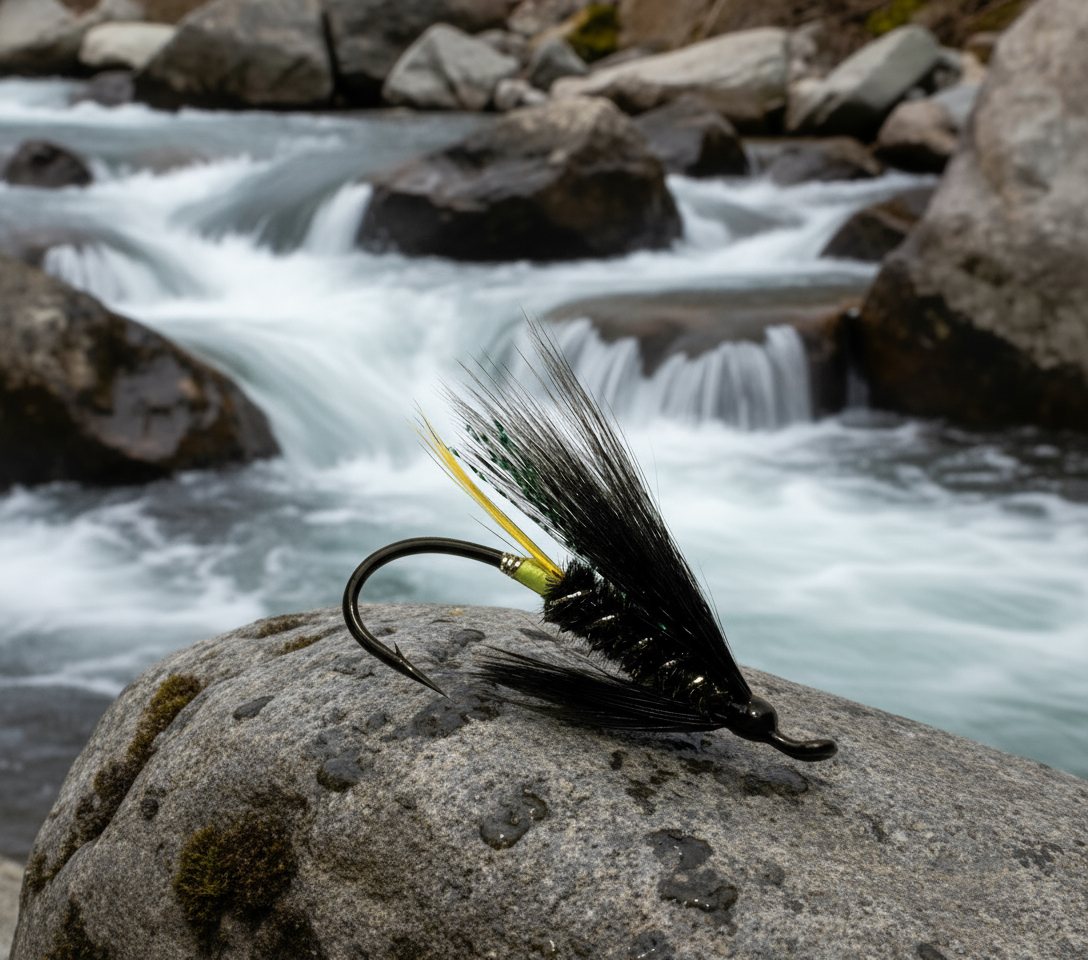 Glitter Bear
Glitter Bear
Characteristics:
Bear hair is moderately stiff with a natural taper and dark sheen. When wet, it becomes slightly translucent, giving subtle life to traditional salmon patterns.
Benefits:
- Soft, lifelike glow when submerged. Highly durable
- Works beautifully in low-water presentations. Has a natural movement in the water
- Highly traditional for eastern Canadian flies
Challenges:
- Patch variation in stiffness and color
- Sourcing restrictions in some regions
Best For:
Flies like the Black Bear Green Butt or Black Dose Hairwing, where refinement and history meet.
Squirrel Tail — Natural Sparkle and Motion

Copper Killer - Fox Squirrel Wing
Characteristics:
Squirrel tail offers short, slightly coarse hair with natural mottling. It adds lively movement and a shimmering accent to smaller hairwings.
Benefits:
- Distinctive barred pattern adds realism
- Easy to blend with other hairs
- Excellent natural shimmer
Challenges:
- Short fibers limit wing length
- Can be slippery when tying
Best For:
Compact salmon hairwings, small sea-trout flies, or accents on larger patterns.
Opossum — Soft Flow and Subtle Life
 Black Doctor - American Opossum Wing
Black Doctor - American Opossum Wing
Characteristics:
American Opossum is fine and soft with excellent movement, opossum hair creates smooth, breathable wings with understated translucence.
Benefits:
- Superb motion even in slow water
- Great for dubbing or mixed wings
- Easy to blend and dye
Challenges:
- Too fine to hold shape alone
- Requires an underwing or stiffer blend
Best For:
Soft, flowing patterns for low-water or small salmon flies.
Fox Tail — Wild Shine and Tapered Elegance
 Arctic Fox Tail Pcs.
Arctic Fox Tail Pcs.
Characteristics:
Fox tail hair combines length, natural gloss, and a lively taper that makes it a favorite for modern salmon and steelhead flies.
Arctic Fox is typicall the preferred fox hair choice due to its longer hair
Benefits:
- Fantastic movement with controlled taper
- Naturally reflective for vivid coloration
- Good structure without stiffness
Challenges:
- Fibers can tangle if not properly stacked
- Slightly more delicate than goat or bear
Best For:
Scandinavian-style hairwings, temple dog-inspired flies, and long-flowing Atlantic salmon streamers.
Grey Fox Body Hair — Subtle Texture and Control
Characteristics:
Softer and shorter than fox tail, grey fox body hair offers a beautiful natural color gradient and gentle underfur ideal for blending.
Grey fox is common is flies like the "Rat" series of salmon flies
Benefits:
- Exceptional for mid-sized wings
- Adds subtle color transitions and texture
- Easy to mix with other natural hairs
Challenges:
- Limited fiber length for larger flies
- Can require more thread control to shape properly
Best For:
Medium-sized salmon flies or blended wings where you want gentle movement and natural hues.
Other fox Hairs include the silver fox and arctic fox. All having its own distinct characteristics
For a very comprehesive breakdown of all the fox hair choices visit the following link https://skeenaflyzone.com/foxes/
Goat Hair — Flow, Strength, and Shimmer
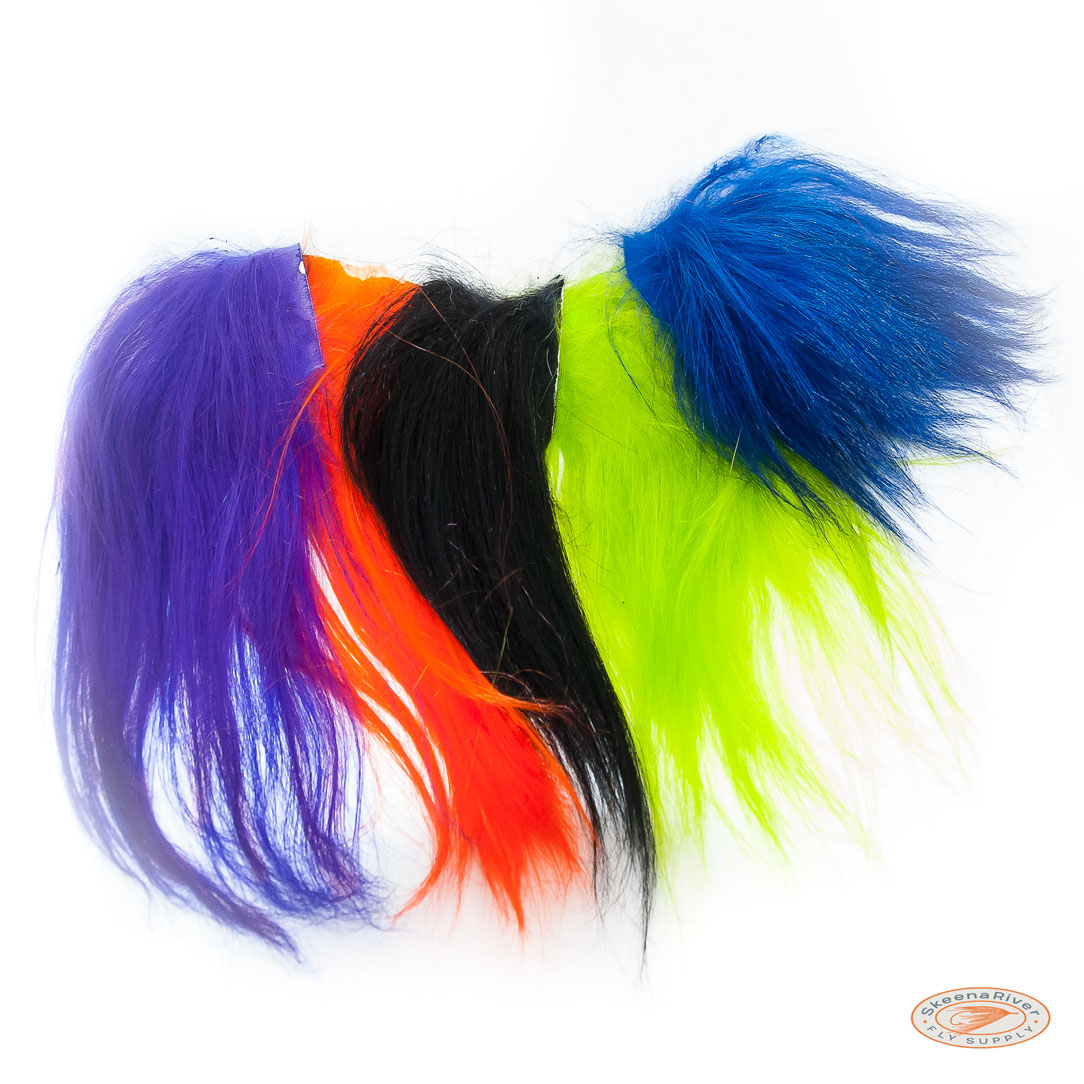
Characteristics:
Goat hair, especially Arctic or Icelandic goat, provides translucent fibers that range from medium stiffness to long, flowing locks. It’s favored for larger salmon and steelhead flies that demand both profile and motion.
Benefits:
- Superb translucence in the water
- Great balance of movement and durability
- Available in many dyed shades
Challenges:
- Long fibers can be tricky on smaller hooks
- Some batches too soft for neat heads
Best For:
Large hairwings or streamer patterns that need shimmer and flow, such as Magog Smelt or Sunray Shadow styles.
Kid Goat — Silky and Refined
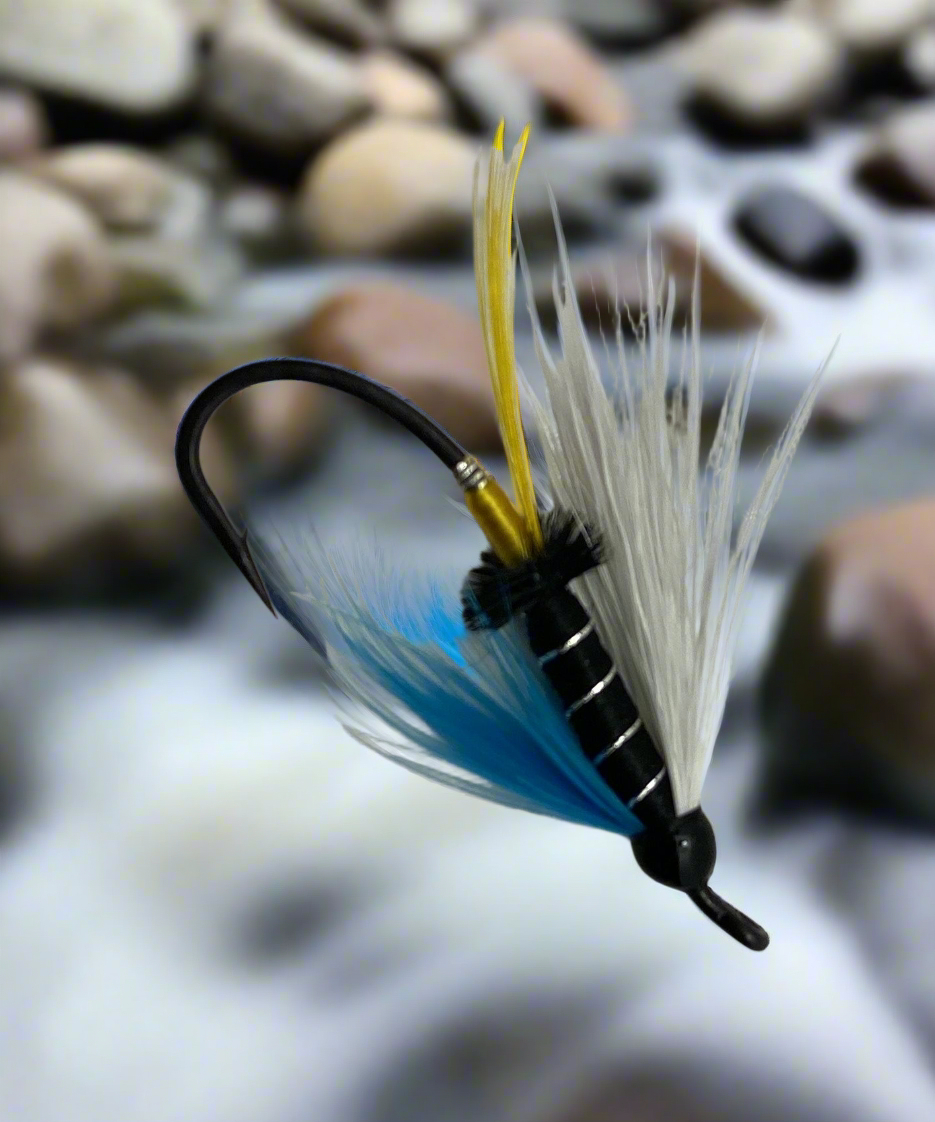 Blue Charm - White Kid Goat Hair Wing
Blue Charm - White Kid Goat Hair Wing
Characteristics:
Kid goat is the younger, finer version of traditional goat hair. It’s luxuriously soft, with a gentle wave that creates beautiful lifelike movement in water.
Benefits:
- Ideal for smaller salmon flies
- Smooth, consistent fiber texture
- Mixes well with synthetic flash for sparkle
Challenges:
- Lacks stiffness — often benefits from a stiffer underwing
- Not as readily available as adult goat
Best For:
Smaller-scale hairwing patterns and delicate low-water flies needing graceful motion.
Finn Raccoon — Flow and Firelight
 Finn Raccoon Pcs.
Finn Raccoon Pcs.
Characteristics:
Known for its incredible movement and glossy texture, Finn raccoon (Finnish fox) has become a modern favorite. The fibers breathe naturally in the current, producing a pulsing, lifelike action. A marabou like fur that is soft and lively with the guard hairs being perfectly straight with lots of body. A great choice for salmon fly patterns
Note: Finn Racoon will be available at DcTackle in the coming weeks
Benefits:
- Exceptional mobility and translucence
- Dyes beautifully into vibrant colors
- Perfect for tube flies and modern hairwings
Challenges:
- Requires support from a stiffer underwing for structure
- Slightly higher price point
Best For:
Contemporary Scandinavian-style flies and long-wing patterns that need to “come alive” underwater.
Temple Dog — The Scandinavian Icon

Image taken from "Fish4Flies Worldwide"
Characteristics:
Originating from northern breeds used in Scandinavian tying, temple dog hair is soft, lustrous, and naturally long. It’s prized for its incredible movement and color retention.
Benefits:
- Supreme motion — pulses with every shift of current
- Durable and easy to work with
- Holds dye color vibrantly for bold flies
Challenges:
- Expensive compared to other natural hairs
- May require trimming for balance on smaller flies
Best For:
Modern tube flies, long-wing patterns, and hybrid hairwing salmon flies.
Nutria — Amazing Qualities
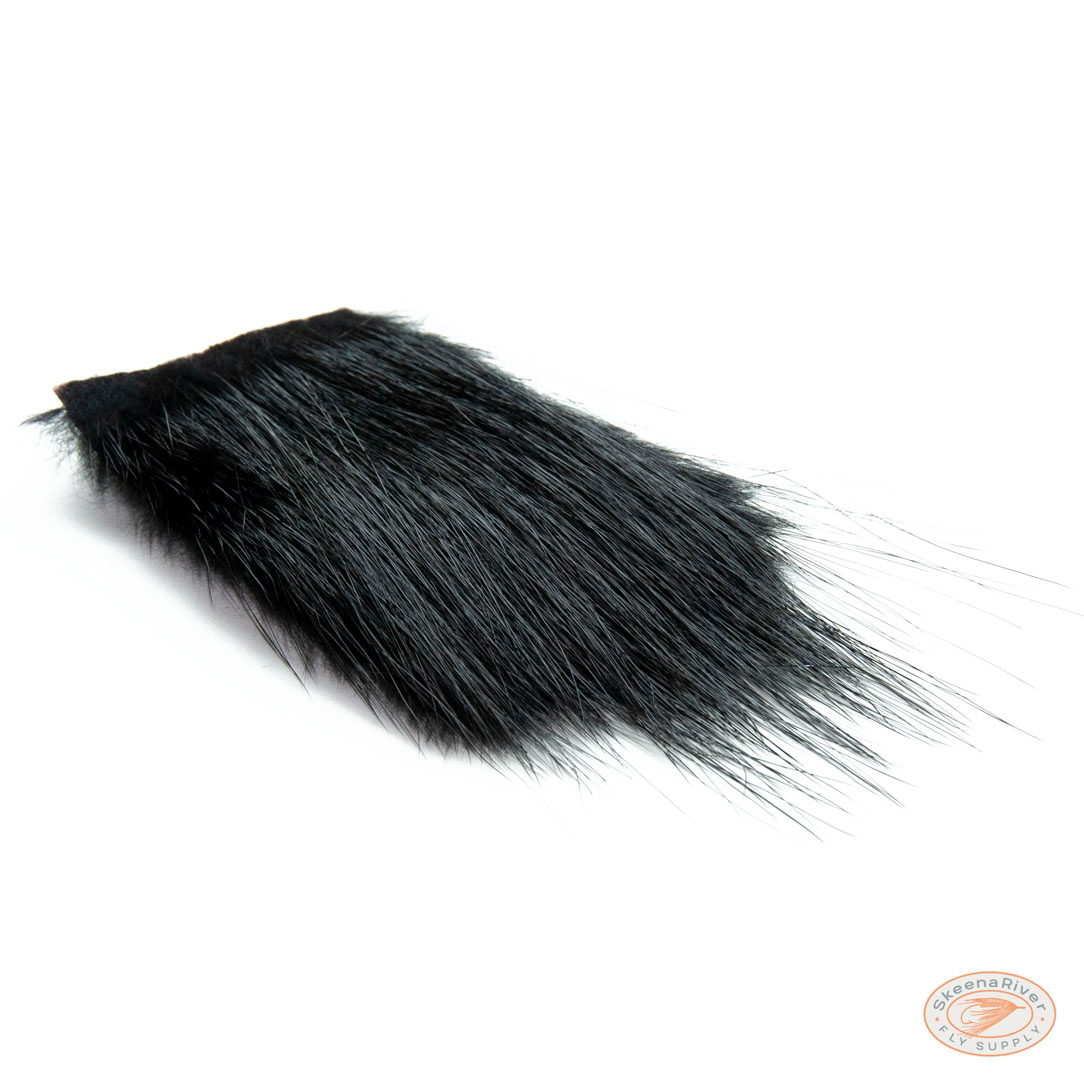 Image by Skeena River Fly Supply
Image by Skeena River Fly Supply
Characteristics:
Nutria hair is very shiny and stiff with a regressed taper. These properties make Nutria great for use in fly tying. Nutria hair maintains it's position in the water, yet it is flexible enough that it moves in the current, almost like vibration.
Benefits:
- Maintains its position in the water yet moves in the current
- Used for underwings, hairwings, and intruders
- Does not collapse in the water
Challenges:
- Can be slippery when securing
- Some recommend reverse tying to ensure it stays in place
Best For:
Intruders and Temple Dog style flies
Bring Your Flies to Life with Premium Natural Materials!
Ready to tie your next masterpiece? Explore our collection of authentic, hand-selected natural hairs — from Kid Goat to Finn Raccoon — sourced and prepared for serious tiers who value quality and tradition.
✨ Shop now at www.dctackle.ca and discover materials that move, shimmer, and fish like the real deal.
💥 Join our Fly Fishing Adventurers’ mailing list for 10% off your first order and insider access to exclusive tying tips, tutorials, and early product releases.
👉 Visit the Shop → — Because the perfect fly starts with the perfect material.
.png)








